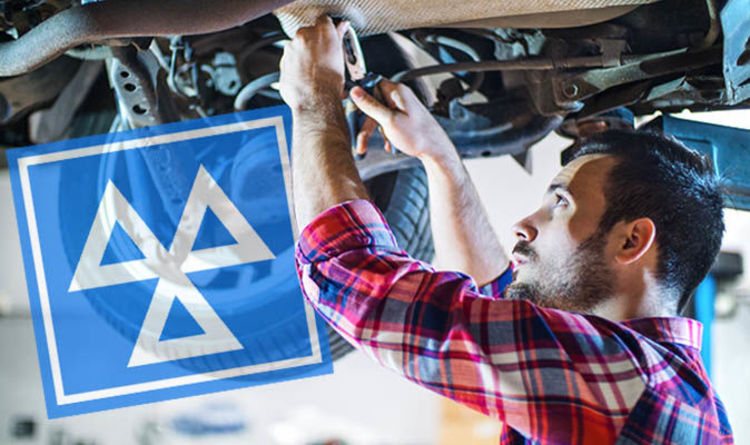
When the UK government introduced the suspension of MOT checks in March due to the expected impact of the Covid 19 lockdown, it set in place a series of events which are only now starting to bear fruit. With garages and testing centres carrying out only major repair work, this sensible precaution at the time has had some perhaps foreseeable consequences. With motorists scrambling to have their vehicles tested in time for new expiry dates, MOT testing centres are finding more major faults than many drivers had anticipated.
July tests showing more faults
July 2020 saw a sharp rise in the number of MOT tests booked, as motorists started to get their cars, vans and motorbikes back on the road in large numbers, many having been garaged since the lockdown was announced in March. Reports coming in from those testing centres for July are showing some quite surprising results, compared to the same month in 2019. Not only are test numbers up, but test results are markedly different from that month, as is much of the follow up work required.
The headline figure is probably the most startling. In July 2019, 25% of all vehicles tested at MOT centres required follow up work, after failing the first time. Forward to July 2020, and that figure had nearly doubled, to 48%. In a year where road use has been at its lowest in living memory, this rise in necessary repair work might seem rather strange; in fact, it is perfectly understandable.
Lack of running causing damage
When motor vehicles are not used regularly, they suffer wear and tear in particular areas; notably, their tyres and brakes. This is not, obviously, due to stresses of driving or riding, but because the hardware used to make these high spec pieces of equipment is basically left to rot. Like any finely tuned instrument, lack of use soon makes the working parts suffer.
Tyres stay in the same position, putting pressure on the walls in the same places; as pressure inevitably drops, the weight of the vehicle presses downwards onto these pressure points, and this causes damage. Brake fluid, fuel and lubricants also lie in their reservoirs or connecting pipes; this inevitably leads to leakage over time.
Unfortunately, tyres and brakes are two of the most important parts of a vehicle’s safety and roadworthiness, and it is these areas which are causing much of the damage to unused vehicles. Not surprisingly, faulty tyres or brakes result in an instant fail at the MOT centre. Follow up work should be quick to carry out, but you won’t be able to drive away with a clean bill of health.
Don’t delay your MOT test
If your vehicle has been standing still for a long period, get it booked in for its MOT now. Use this handy online booking form to find the testing centre and time slot to suit you best; and hurry, because slots are getting hard to come by as vehicles come out of lockdown storage.
July tests showing more faults
July 2020 saw a sharp rise in the number of MOT tests booked, as motorists started to get their cars, vans and motorbikes back on the road in large numbers, many having been garaged since the lockdown was announced in March. Reports coming in from those testing centres for July are showing some quite surprising results, compared to the same month in 2019. Not only are test numbers up, but test results are markedly different from that month, as is much of the follow up work required.
The headline figure is probably the most startling. In July 2019, 25% of all vehicles tested at MOT centres required follow up work, after failing the first time. Forward to July 2020, and that figure had nearly doubled, to 48%. In a year where road use has been at its lowest in living memory, this rise in necessary repair work might seem rather strange; in fact, it is perfectly understandable.
Lack of running causing damage
When motor vehicles are not used regularly, they suffer wear and tear in particular areas; notably, their tyres and brakes. This is not, obviously, due to stresses of driving or riding, but because the hardware used to make these high spec pieces of equipment is basically left to rot. Like any finely tuned instrument, lack of use soon makes the working parts suffer.
Tyres stay in the same position, putting pressure on the walls in the same places; as pressure inevitably drops, the weight of the vehicle presses downwards onto these pressure points, and this causes damage. Brake fluid, fuel and lubricants also lie in their reservoirs or connecting pipes; this inevitably leads to leakage over time.
Unfortunately, tyres and brakes are two of the most important parts of a vehicle’s safety and roadworthiness, and it is these areas which are causing much of the damage to unused vehicles. Not surprisingly, faulty tyres or brakes result in an instant fail at the MOT centre. Follow up work should be quick to carry out, but you won’t be able to drive away with a clean bill of health.
Don’t delay your MOT test
If your vehicle has been standing still for a long period, get it booked in for its MOT now. Use this handy online booking form to find the testing centre and time slot to suit you best; and hurry, because slots are getting hard to come by as vehicles come out of lockdown storage.











